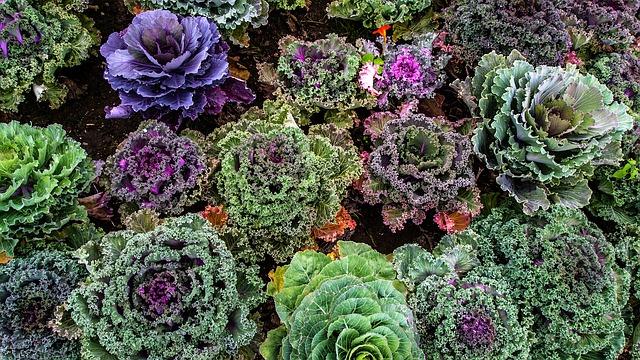Kale is a tough, cold-hardy member of the cabbage family, but kale grown in cool, frosty weather is amazingly sweet. If you already harvested a crop of kale you planted during spring (or even if you didn’t!), you can plant a fresh crop in late summer or early autumn. If you live in a warm climate, you can plant kale as late as October.
Although kale tolerates frosty weather, it grows best where temperatures don’t drop into the teens. If this is a possibility, then plant kale in a cold frame, or protect the plants with row covers. Consider planting fast-growing cultivars such as Red Russian or White Russian, cold-hardy varieties ready as soon as 40 days. The plants may stall if days are hot, but the kale will take off and grow like crazy when the temperatures drop.
Looking For Non-GMO Kale Seeds? Get Them From A Company You Can Trust!
Seeds are slow to germinate outdoors when days are still warm, so pick up a few seedlings at your local garden center, or start seeds indoors four to six weeks ahead of planting time.
Story continues below video
https://www.youtube.com/watch?v=wdZ5Nlt3weE
Kale isn’t difficult to grow. Here’s a few tips to get started.
- Although kale prefers at least six hours of sun, the plant will tolerate partial shade, especially in hot climates.
- Soil for kale should be moist and well-drained but never soggy.
- Enrich the soil with an inch or two or compost, well-rotted manure or other organic material.
- Plant the seedlings at about the same depth they’re situated in the nursery container, but definitely no higher than the lowest set of leaves.
- Allow 12 to 15 inches between each plant and 18 to 24 inches between rows. You can also stagger the plants, which saves space in a small garden
- Mulch the kale plants lightly when the plants are about 6 inches tall to keep the soil moist and maintain an even soil temperature. Mulch also keeps weeds in check and prevents mud from sticking to the leaves.
- Provide 1 to 1 ½ inches of water per week, unless it rains.
- Feed the plants about halfway through the growing season, using a balanced commercial fertilizer, diluted solution of fish emulsion, or manure tea.
- Control aphids or flea beetles with an insecticidal soap spray. Never spray plants on hot, sunny days, or if you notice bees, ladybugs or other beneficial insects on the plant.
- Hand-pick larger pests such as cabbage worms, cutworms or cabbage loopers. You can also spray the pests with Bt (Bacillus thuringiensis), a natural, bacterial pesticide that kills pests without harming beneficial insects.
- Harvest kale after one or two light frosts, as kale needs frosty nights to convert the starches into natural sugar. You can even harvest kale when the plants are covered with snow!
- Pick leaves around the outer edge of the plant. Leave the terminal bud at the top, center of the plant if you intend to continue harvesting. Be sure to pick kale before the leaves get old and tough. If this happens, toss them on the compost heap.
Kale is a vegetable that gardeners even in the harshest climates enjoy. Get planting!
What advice would you add for growing kale? Share it in the section below:
Bust Inflation With A Low-Cost, High-Production Garden. Read More Here.
 Off The Grid News Better Ideas For Off The Grid Living
Off The Grid News Better Ideas For Off The Grid Living





